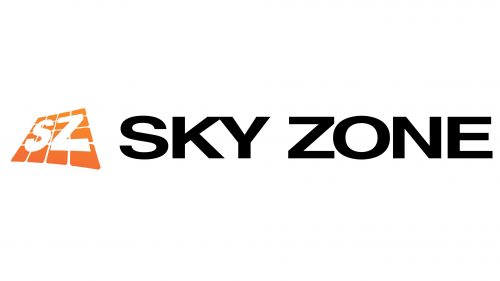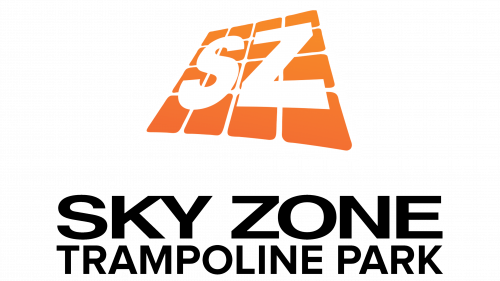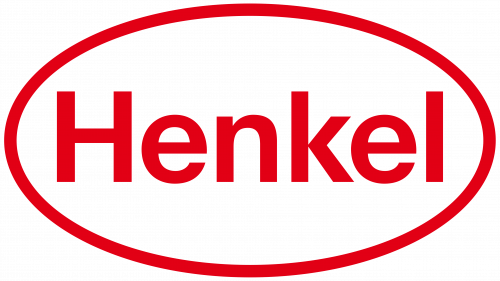The Sky Zone logo inspires active recreation, which becomes much more exciting with trampoline parks. The entertainment park network uses a dynamic emblem to create an atmosphere of fun, excitement, flight, and good vibes, which attracts new visitors.
Sky Zone: Brand overview
Sky Zone’s tale started in 2004 when businessman Rick Platt had the notion to produce a brand-new sports entertainment genre. At first, Sky Zone had a completely different idea than what the business would eventually become recognized for. Platt had an idea for a brand-new team sport that would be played on a court covered in trampolines.
In 2004, Platt committed a large sum of money to build a prototype for his sports arena. He rented a warehouse in Las Vegas and started building the world’s first trampoline court. The concept was to develop a trampoline-based basketball-like sport where participants could leap to the hoop.
But just as the prototype was about ready, Platt encountered an unanticipated issue. Leagues and professional players had no interest in the new sport. Though fate had other ideas, this might have been the end of his venture.
In 2005, in an attempt to recover his investment, Platt began leasing his trampoline arena for different kinds of events. He was surprised that people were very interested in trampolines for jumping on them. Kids and teenagers especially started to embrace this approach.
Platt changed the idea after he realized how much of an entertainment attraction his innovation could be. He started brainstorming the notion of an indoor trampoline park rather than a sports league.
The first Sky Zone trampoline park opened in Las Vegas in 2006. It immediately gained popularity as a location for corporate gatherings, kid’s birthday celebrations, and general active recreation.
The company expanded quickly due to the success of the original park. Franchising began in 2009, facilitating the brand’s rapid national expansion.
A significant turning point in the company’s history occurred in 2011. The business established its first international park in Canada’s Mississauga, Ontario. The brand’s international growth started with this.
In 2012, trampoline dodgeball and fitness classes were added to park offerings. As a result, the parks began to draw adults looking for novel methods to maintain an active lifestyle in addition to children.
The firm expanded significantly in 2013. At year’s end, the corporation operated over 80 parks worldwide.
The company commemorated its tenth anniversary in 2014 and continued its rapid expansion. This year, it also started incorporating interactive games and jump-tracking technology into its parks.
2016 was a year of innovation for the business. The firm unveiled the Trampoline Park 2.0 idea, which featured a wider selection of activities like freestyle zones, obstacle courses, and climbing walls.
2017 saw the opening of its first parks in Australia and Mexico as part of its ongoing global growth. This enhanced the business’s standing as a world leader in the trampoline entertainment sector.
In 2018, an important development occurred in the company’s history. CircusTrix, a significant participant in the dynamic entertainment sector, purchased the company. This combination established the world’s largest network of operating amusement parks.
Virtual reality was introduced in some parks in 2019 as part of the company’s ongoing innovation efforts. This made it possible to combine thrilling virtual experiences with physical exercise on trampolines.
2020 saw new franchise locations in several American and international cities, continuing to grow the firm’s network of franchises. To draw in more visitors and maintain its position as a leader in the entertainment industry, the firm also started incorporating new technology into its parks, such as virtual reality, in some activities.
The firm introduced a new visitor loyalty program in 2021. Regular customers received various bonuses and discounts through this program, which boosted visitation and improved the company’s relationship with the public.
In 2022, the company began adding new activities to its parks. It unveiled updated parkour zones and ninja courses, broadening the entertainment options and drawing in new clientele.
In 2023, the business started actively creating team-building exercises and business events. Using trampoline parks’ distinctive qualities, the company created customized programs for companies that aimed to improve employee physical activity and team spirit.
The firm ushered in 2024 with an emphasis on sustainability. The corporation began employing eco-friendly materials to construct and keep buildings and installed more energy-efficient technology in its parks.
Sky Zone expanded its footprint and started providing new entertainment and services as it changed and adapted to the market’s demands.
Meaning and History
What is Sky Zone?
It is a chain of indoor trampoline parks offering a variety of trampoline-based activities and attractions. The parks feature wall-to-wall trampolines, foam pits, dodgeball courts, slam dunk areas, and obstacle courses. The company offers people of all ages a fun and active environment for recreation, fitness programs, and special events such as birthday parties and group gatherings. Known for its physical activity promotion and unique entertainment, the park has become a popular destination for families, friends, and fitness enthusiasts.
2004 – today
Sky Zone moved away from complex symbols and obscure abstractions, focusing on simple and clear images. The company took a practical approach, using a trampoline platform logo. This emblem fully reflects the essence of the entertainment parks, which offer active recreation for adults and children.
To showcase the brand’s modernity, the designers made the image look three-dimensional by representing it as an uneven trapezoid. This shape creates a sense of perspective, making it seem like a tilted surface in a three-dimensional space rather than a flat, two-dimensional object. The surface appears slightly curved, almost like a trampoline springing underfoot.
Like any jumping platform at a Sky Zone facility, the emblem is divided into multiple square sections. While the actual trampolines are colorful and vibrant, the base is orange, with neutral white lines separating the sections. This color palette might seem plain despite the emotional intensity of the orange, which symbolizes energy and excitement.
The segments’ rounded corners emphasize the complete safety of active play. However, the logo doesn’t fully align with reality, as visitors to trampoline parks often get injured. The softened edges should be seen as an attempt to inspire trust rather than a real promise of safety.
On the segmented orange trapezoid are white letters “SZ”—an abbreviation for Sky Zone. These letters are as uneven as the base and tilted toward the upper left corner. The designers achieved a perspective effect by altering the proportions of the abbreviation, making it seem as though the “S” and “Z” are gradually receding. The visual dynamic conveys the excitement and fun atmosphere of the park.
Next to the emblem is the company’s full name. Its design doesn’t immediately suggest that it belongs to a trampoline park network, as the lettering uses a simple bold sans-serif font. The letters are visible thanks to their crisp, straight lines, combined with the black color, creating an impression of solidity and seriousness. The geometric style of the font seems ordinary, but one detail stands out: the “K” and “Y” are connected at the top, reminiscent of friends holding hands while jumping on a trampoline.






